#focal view
Photo

London Landscape Fountain
Ideas for a medium-sized, modern backyard with decking and partial sun exposure.
0 notes
Photo

Contemporary Landscape
An example of a mid-sized contemporary partial sun backyard landscaping with decking.
0 notes
Text

"I look forward to the day we meet again."
Once again inspired by @isnt-it-pretty's FtCoR fic
#genshin impact#cyno#hermanubis#genshin fanart#digital art#this is the other scene I adore the imagery in#got a lil too excited with a new texture brush in this one perhaps#as a fun art thing I tried to make the focal point of this pic change depending on whether you view this in color or not#myart#fanart#cw blood
352 notes
·
View notes
Text
.
#thinking of dinosaurs and troodontids were my favorite dinosaurs as a child#when younger i had a real full troodontid tooth fossil that meant a lot to me#for a time we lived within a few kilometers of hadrosaur sites and troodontid sites#while wider general area had many sites of recovery for the big celebrities like tyrannosaur and multiple dromaeosaurs#at that time troodontids were kinda infamous for i think the depiction in some childrens field guides and dino books#which depicted like a fantasy speculative humanoid troodontid based on 1980s model at Canadian Museum of Nature in ottawa#anyway would visit a small local paleo center a lot and woman in her 70s or 80s ran the counter of their center and rock shop#one day she asked me what my fave dino was and i said troodon so she pulled out the tooth and just gifted it to me#in little black case size of ring box with padding and transparent plastic viewing cover kinda like laminate for displaying a trading card#tooth got stolen from out my vehicle while giving some people a ride while at university before i got too poor for tuition#later during first year of pandemic owner of my storage unit died and new property owners threw away everything i ever owned#i was homeless anyway lost job due to early pandemic closures and had to allocate any money to insulin and other prescrip meds#but wouldve found a way to save my things if the new owners had contacted me#they threw out photoalbums y backpacking gear y books y musical instruments y clothes y artwork y camera y all family keepsakes#and all childhood treasures like souvenirs and gifts and school awards and writing portfolios and all the little memories#which i was always sentimental about as child#from earliest age my room looked like a natural history museum with plants and maps and library of field guides#and rocks and field trip keepsakes and all kinds of little animal figurines and mother had painted room in forest greens and browns#to feel like a forest and among the succulent plants and a globe sat the troodon tooth#parents passed when i was a child#never near any family and were always moving never got to settle into proper stable place then father passed after long sad illness#and mother put in so much effort but she passed few years later and i could not take care of myself or my remaining material possessions#and so im still quite hurt having nothing whatsoever remaining of my childhood or school friends or mother or life generally#and when trying to process grief my thoughts often come back to the troodontid tooth as a focal point a distillation of what was lost#even when young i knew it was advised not to become too connected to material physical possessions#but still there are some small little trinkets in our lives that seem to hold so much meaning and i tortured myself for losing that tooth#thinking about troodon reminds me of childhood
39 notes
·
View notes
Text

yep I'm still here doing art here and there, still chugging away at this. updating Videre's reference sheet bc the old one is... well let's say it's old and I don't like it so much anymore. she could use a new one.
now I have to play the game of figuring out how much I want to change Videre's helmet and ear-fins on said helmet from what they looked like before. and if I want to change it so they're basically detachable ear-covers or if it's different from the ones already portrayed in the two to the right.
#wip#overwatch#overwatch 2#overwatch oc#videre#there's still so much besides these three views that will be on the sheet#but they're the focal points#the file claims I started it five months ago sooo who knows how long it'll be before it's all done
21 notes
·
View notes
Text
cant stand other people talking about my blorbos. someone with the best intentions could be talking about my gay autist and i’ll get so irrationally mad when they blame something on him being gay when its actually the autisms fault
#does this make sense to anybody#this is why im so terrible at making friends in fandom#if somebody is wrong (misaligned from my views) about a character or a cc or a story arc#i literally do not want to even see them on my dash#which is crazy because its so antithetical to the way that i act irl#like im genuinely so easy going and im totally chill to work with & be around ppl who i dont necessarily get along with#i guess its probably Because im so chill irl that when i have a space that i can actually curate and influence#i take that opportunity to be super picky#idk!!!!#all of this to say that i feel extremely lucky to have found a group of ppl who literally never get it wrong#LOL#also i will not give context to this post because the focal point is my own absurdity and not. somebodys (correct) take lmfao
25 notes
·
View notes
Text
not gonna lie, i kinda love how hop and arven feel like the true protagonists of their respective games. like out of all of your traveling companions in swsh & scarvio, they're both the most prominent and important to their main storylines — along with going through the most development over the course of their games. they're the real heart of their stories to me.
#hop haters dni do not say SHIT about my SON#there's more to hop's character than wanting to be like his big bro — him realizing that himself is literally his character arc#honestly i'm so down for my player character not being the real focal point of the story#i play pokemon for the characters more than anything so i love getting to see the rivals / traveling companions get more development#i'm fine with just being the catalyst for shit going down around me i don't have to be the true hero of this tale#though i don't really see myself in the protagonist anymore i see them as more of an oc / the lil dude i get to view the story through#anyways please gimme more of this in the future game freak i love it#i should not be up rn i need to go back to bed#pokemon#mj.txt#(if ppl start talking shit about hop i will turn off reblogs i'm not here for that)
21 notes
·
View notes
Photo


Poland, Rożnów Lake
May 2023
#focal point#scenic views#boats#sailing#trees#lakes#leaves#foliage#green#greenery#waterscapes#vacation vibes#nature photography#Europe#Poland#Polska#photographers on Tumblr#original photography
8 notes
·
View notes
Text
Leading Reflex Reflector Manufacturer for All Needs
Fiem Industries Limited is a leading reflex reflector manufacturer, known for producing high-quality automotive lighting solutions. Our reflex reflectors are designed to enhance visibility and safety on the road. Trust Fiem Industries for reliable and durable lighting products that meet international standards. Choose Fiem Industries for top-tier automotive lighting solutions.
#Automotive Lighting#Central High Mounted Stop Lamp#Multi Focal Reflector manufacturer#rear view mirror manufacturer#warning triangle manufacturer#reflex reflector manufacturer#Hub Motor manufacturer#Automotive lamp manufacturer#fog lamp manufacturer#LED Automotive Lighting manufacturer#automotive exterior lighting manufacturer
0 notes
Text

WEBCOMIC IN PROGRESS:
NATANEET

NATANEET is a VERY early stage webcomic, created by an amateur, first time comic creator. NATANEET will follow Natalie, a pessimistic, anxiety ridden, and self proclaimed “Stupid fucking otaku”, whom has adamantly refused to speak to anyone offline unless completely necessary, that being every Saturday when she leaves home to go grocery shopping. This routine is thrown offtrack when a fellow store frequenter takes it upon himself to befriend her.




NATANEET will be drawn digitally, and the sketches depicted above are not guaranteed to become actual comic panels. The images provided are only meant to serve as basic visuals of the focal characters.
It’s important to note that the author intends to delve into serious topics within the comic, such as mental health, social isolation, childhood trauma, gender dysphoria, internalized trans/homophobia and racism, as well as chronic pain. Warnings will be provided in the tags of uploads, so if you feel any of these topics may be difficult for you to read about, please be sure to check those before each chapter.
Additionally, while all topics in some way tie into the author’s personal past experiences, this story will be in the perspective of a trans woman, however the author is a transmasculine NB. If any problems come up in this story or if anything insensitive happens, PLEASE be sure to DM the author about it. While this is not a vent work, this story is meant to act as a cathartic exercise, both for the author and hopefully the audience, so anything that may taint that experience must be dealt with if ever present.
The first chapter will hopefully be coming out sometime before the end of June, so please keep your eye out if interested! Good day/night, dear reader.
#comic#comics#webcomic#webcomics#web comic#web comics#original comic#original comics#trans artist#black artist#the latter tags are intended to reach the target demographic considering the themes#as well as describe the author#as stated both identities will play a role in the story#though while the comic will be going into the mental toll that societies view of these groups have on individuals#this is by no means intended to be entirely negative#as a story about recovery black and trans JOY will also be focal to the story
1 note
·
View note
Text
So you know absolutely positively nothing about photography
Cellphone cameras are fucking great. I love them. I love the ability to take photos whenever and wherever at basically zero cost.
Point-and-shoot cameras have always been awesome and accessible devices.
This is not a post shit-talking "basic" cameras. This is a post for people who have only ever used basic cameras who want to know at least slightly more about photography.
Because, the thing is, a remarkable amount of photography is math. And if you don't know it's math, it looks like a mystery. And you may be standing there snapping a photo with your phone that looks pretty good, but your friend with a DSLR looked at the sky, twisted a dial, and took three steps to the left and they took a photo of the same subject that looks like it belongs on a magazine cover.
How did they do that?
Probably math.
If you've come into possession of a DSLR camera and are disappointed that the photos you're taking aren't looking like the photos you thought came from DSLRs, I'm here to tell you about the math you may not know about.
What is a photograph?
At its most basic, a photograph is the result of light on a sensor. Let's consider a pinhole camera for a moment. A pinhole camera is a lightproof box with a piece of photographic paper on one side and a tiny hole in the other.
When you create a photo with a pinhole camera, you're using pretty much all of the math you would in a big fancy camera, just in a cruder form they are:
The sensitivity of the paper, film, or camera sensor to light (this is your "ISO" if you're using a digital camera or film). Light sensitivity can be easily changed on a digital camera, but on chemical-treated paper or film the sensitivity is predetermined and cannot be changed. If you want to change the ISO on an analog camera, you need to change the medium that's being exposed.
An opening to let light in - your F-stop, or aperture. The F-stop of a photo is how wide open the lens is to let light onto your film or sensor. In a pinhole camera, you have something that is theoretically a very very large F-stop because you have a very, very tiny opening to let light through (F-stops run in reverse - the bigger the number, the smaller the opening).
Exposure - your exposure is the amount of time you leave your sensor open to the light. The majority of photos you see in the world have exposure times that are measured in tiny fractions of a second, sometimes in thousandths of a second. If you're using photo paper in your pinhole camera, you may have an exposure time of minutes rather than tiny portions of a second, but your photo exposure will still depend on how long you want to leave your "lens" open.
Focal length - your focal length is a description of the relationship of the distance between the light source and the light sensor. You can manipulate this in a pinhole camera by making the camera longer or shorter. A larger focal length means a narrower field of view - it zooms in on the subject.
A pinhole camera is the simplest camera that lets you, the photographer, control all of the elements of a photo. This is, functionally, fully manual photography.
So what's the difference between all that and a cellphone camera?
Point-and-shoot cameras like those on cellphones give the user more limited control over these settings. For instance, think of a disposable camera. On a disposable camera, the photographer has control over one setting - the ISO of the film, which they can select at purchase. They can't control how wide the lens opens or how long it stays open, and the only way they can compensate for lighting that is a poor match to the ISO is flash.
Cellphone cameras are very much like a standard point-and-shoot. By default, users point their cameras, then shoot a photo. Many cellphones have a "pro" mode that will allow the user to emulate different ISOs or f-stops, but the sensors in cellphone cameras aren't as good as the ones in camera-cameras, and the lenses are very limited as well. Some cellphone cameras and point-and-shoot digital cameras WILL allow users to set longer exposures, and many cellphone cameras have multiple lenses which does allow for some lens effects, but they don't give a huge amount of control to the user.
Okay so let's say I've got my new shiny camera, what do I need to know?
For best results, you want your ISO to match the light you're shooting in. Low ISO is for bright light, high ISO is for low light. If you wanted to take snapshots of your family outdoors at disneyland in the summer, you'd buy 100 ISO film. When I used to shoot football games at night in oddly lit stadiums, I'd use 1600 ISO film. If you have a DSLR camera, there's a setting somewhere in there that tells you how to set the ISO.
If you are shooting in relatively low light and the photos are turning out darker than you'd like *but* things are moving too quickly to use a longer exposure, you can bump up your ISO for brighter, sharper images but they will be more noisy and grainy than ones shot at a lower ISO. If you want clean, smooth, crisp images, your goal should be to shoot with the lowest ISO possible.
The Aperture of your camera lens determines your F-Stop. This acts like the pupils of your eyes. When it's really really bright out, your pupils shrink down to let in less light. When it's darker out, your pupils get bigger to let in more light. If you are shooting in low light, you want a low F-Stop, which means that your camera's lens is open really wide. If you are shooting in a bright environment, you want a higher F-Stop, which will mean the opening is very small.
Since your F-stop interacts with the focal length of your lens, you will find that zooming in with the lens often makes images darker. To shoot clear images from far away, you need to be very conscious of your F-stop, your ISO, and ambient lighting conditions.
Exposure describes the length of time you set the camera to leave the aperture open. In many DSLRs this can span from 1/3200th of a second to infinitely long (the "bulb" setting means "aperture is open until you close it.") If you want sharp images of frozen motion, you want the fastest speed that you can get. Sports photography and photography of things like insects or milk crowns often use extremely short exposures to get sharp images. If you want blurry images you want slower speeds. If you want to take a photo in a low-light environment and capture motion within that environment - for instance, taking photos of cars on a freeway at night - you want slower speeds (if you want to do this in a brighter environment, like taking photos of a stream in the daytime, you want slower speeds and a specific kind of lens filter called a neutral density filter). When exposures are set to be longer than about 1/60th of a second, images with motion start to look blurry.
Focal Length determines the field of view of your subject. If you have a lens with variable focal lengths, this is called a zoom lens. A longer focal length zooms you in and a shorter focal length zooms you out. Lenses with fixed focal lengths are called prime lenses, and can't zoom in or out.
Depth of Field - your depth of field is a combination of the interaction of your focal length, your distance from your subject, and your F-stop. The depth of field describes the relative amount of space in a photograph that is in focus. A long depth of field means that much of the image plane is in focus. A short depth of field means that a narrow portion of the image plane is in focus.
A low F-stop produces a narrow depth of field. A long focal length produces a narrow depth of field.
You can think of your camera as a tool that measures time and space. Your ISO and Exposures are measurements of time (how quickly the sensor senses the light, how long the sensor is exposed to the light), the F-Stop and the focal length are measurements of space (how wide the aperture of the camera is, how far the lens is from the sensor).
The pre-set modes on your camera, the ones on the dial that show a person running, flower, or a cloud, or a lady with a hat - these are generic settings that combine an ISO, exposure time, and f-stop that are likely to work well for outdoor action shots, landscape photography, cloudy light, and portraits. When you're using those pre-set modes, you control the focal length and not much else.
When you understand that the running person/action mode means low-ish ISO combined with high shutter speeds, you can start just setting your own ISO and shutter speed when you're shooting sports. When you know that portrait mode sets you up for low-ish f-stops, relatively quick shutter speeds, and mid-range ISOs, you can just start setting those things on your own so you can have more control.
"What about light metering?"
Since your camera is a machine that records light, light metering is pretty important. The light meter of your camera will tell you if your settings are "correct" for the amount of that the light sensor senses. In most modern cameras there is a light metering display on the bottom edge of the viewfinder that goes from negative to positive; if the meter shows that you are in the negative it means that your photo will be under-exposed (too little light will get to the sensor and the image will appear dark), if the meter shows that you are in the positive it means that your photo will be over-exposed (too much light will get to the sensor and the image will appear too bright - "blown out"). The way to correct for under or over exposure is to change the length of the exposure, making it longer for underexposed images and shorter for overexposed images.
What the light meter is doing is thinking about all of your settings and the lighting for you. It looks at the ISO, focal length, f-stop, light hitting the sensor, and planned exposure time and tells you what that combination of settings is likely to produce - something too bright, or something too dark.
When you are more experienced with photography, you get good at juggling these things on the fly and messing around with them more, which is how you can do the magic of looking at the sky, twisting a dial, taking three steps to the left, and knocking it out of the park with a picture.
It only looks like magic because you're doing a ton of math under the hood that is extremely non-obvious to people who are new to photography.
Anyway, here is a good guide to depth of field and what goes into it.
Here is a basic photography textbook that explains the principles that I've gone over here in a lot more detail with a lot better explanations. It's a film photography textbook, but one of the cool things about photography is that a lot of stuff from the analog era is still relevant in the digital area, and the basics haven't changed.
However all of that is about the *technical* aspects of photography. Photography isn't just a record of exposure time and focal length, so here's a basic photo composition textbook that talks about the artistic principles of photography.
2K notes
·
View notes
Text
South Africa’s genocide case has put the spotlight on a deeper fault line in global geopolitics. Beyond the courtroom drama, experts say divisions over the war in Gaza symbolize a widening gap between Israel and its traditional Western allies, notably the United States and Europe, and a group of nations known as the Global South — countries located primarily in the southern hemisphere, often characterized by lower income levels and developing economies.
Reactions from the Global North to the ICJ case have been mixed. While some nations have maintained a cautious diplomatic stance, others, particularly Israel’s staunchest allies in the West, have criticized South Africa’s move.
The US has stood by Israel through the war by continuing to ship arms to it, opposing a ceasefire, and vetoing many UN Security Council resolutions that aimed to bring a halt to the fighting. The Biden administration has rubbished the claim that Israel is committing genocide as “meritless,” while the UK has refused to back South Africa.[...]
As a nation whose history is rooted in overcoming apartheid, South Africa’s move carries symbolic weight that has resonated with other nations in the developing world, many of whom have faced the burden of oppression and colonialism from Western powers.
Nelson Mandela, the face of the anti-apartheid movement, was a staunch supporter of the Palestine Liberation Organization and its leader Yasser Arafat, saying in 1990: “We align ourselves with the PLO because, akin to our struggle, they advocate for the right of self-determination.”
Hugh Lovatt, a senior policy fellow with the Middle East and North Africa Programme at the European Council on Foreign Relations, said that while South Africa’s case is a continuation of its long-standing pro-Palestinian sympathies, the countries that have rallied behind it show deeper frustrations by the Global South.
There is “a clear geopolitical context in which many countries from the Global South have been increasingly critical over what they see as a lack of Western pressure on Israel to prevent such a large-scale loss of life in Gaza and its double standards when it comes to international law,” Lovatt told CNN.
Much of the non-Western world opposes the war in Gaza; China has joined the 22-member Arab League in calling for a ceasefire, while several Latin American nations have expelled Israeli diplomats in protest, and several Asian and African countries have joined Muslim and Arab nations in backing South Africa’s case against Israel at the ICJ.
For many in the developing world, the ICJ case has become a focal point for questioning the moral authority of the West and what is seen as the hypocrisy of the world’s most powerful nations and their unwillingness to hold Israel to account. [...]
Israel sided with the West against Soviet-backed Arab regimes during the Cold War, and Western countries largely view it “as a fellow member of the liberal democratic club,” he added.[...]
“But the strong support of Western governments is increasingly at odds with the attitudes of Western publics which continue to shift away from Israel,” Lovatt said.
Israel has framed the war in Gaza as a clash of civilizations where it is acting as the guardian of Western values that it says are facing an existential threat.
“This war is a war that is not only between Israel and Hamas,” Israeli President Isaac Herzog told MSNBC in December. “It’s a war that is intended – really, truly – to save Western civilization, to save the values of Western civilization.”
So far, no Western countries have supported South Africa’s case against Israel.
Among Western states, Germany has been one of the most vocal supporters of Israel’s campaign in Gaza. The German government has said it “expressly rejects” allegations that Israel is committing genocide in Gaza and that it plans to intervene as a third party on its behalf at the ICJ.
An opinion poll by German broadcaster ZDF this week however found that 61% of Germans do not consider Israel’s military operation in the Gaza Strip as justified in light of the civilian casualties. Only 25% voiced support for Israel’s offensive.
But it is in Germany’s former colonial territory, Namibia, that it has attracted the fiercest criticism.
The Namibian President Hage Geingob in a statement on Saturday chided Berlin’s decision to reject the ICJ case, accusing it of committing “the first genocide of the 20th century in 1904-1908, in which tens of thousands of innocent Namibians died in the most inhumane and brutal conditions.” The statement added that the German government had not yet fully atoned for the killings.
Bangladesh, where up to three million people were killed during the country’s war of independence from Pakistan in the 1970s, has gone a step further to file a declaration of intervention in the ICJ case to back South Africa’s claims, according to the Dhaka Tribune.
A declaration of intervention allows a state that is not party to the proceedings to present its observations to the court.
“With Germany siding with Israel, and Bangladesh and Namibia backing South Africa at the ICJ, the geopolitical divide between the Global South and the West appears to be deepening,” Lovatt said.
Traditionally, the West has wielded significant influence in international affairs, but South Africa’s move signals a growing assertiveness among Global South nations that threatens the status quo, says Adekoya.
“One clear pattern emerging is that the old Western-dominated order is increasingly being challenged, a situation likely to only further intensify as the West loses its once unassailably dominant economic position,” Adekoya said.
19 Jan 24
2K notes
·
View notes
Text
JUNO KEYWORDS IN NATAL
- asteroid tutorial

ᰔᩚ જ⁀➴ Juno in the 1h
good looking spouse, important life lessons surrounding marriage and commitment, marriage is a focal point in your life, spouse will approach you first, spouse will help you discover more about yourself, spouse will change your life direction, marriage will cause you to have new outlooks on life, passionate marriage, dominant spouse, masculine spouse, confident spouse, spouse makes you feel like you’re fully yourself, love at first sight/upon first impression when meeting your spouse, being committed to yourself
ᰔᩚ જ⁀➴ Juno in the 2h
spouse spoils you, stable and peaceful marriage, shares similar values with spouse, laid-back/chill/easy going spouse, financially stable spouse, trauma bonding with spouse, spouse is your emotional security in life, spouse improves your self worth, very protective or possessive spouse, needs a safe space to wanna be with someone long term, needs someone who protects them, being committed to your finances
ᰔᩚ જ⁀➴ Juno in the 3h
healthy communication with your spouse, shares a lot of similar interests with spouse, similar opinions to your spouse, charming spouse that has a way with words, outgoing spouse, possibility of spouse living in your neighborhood, meeting your spouse on social media, going to school with your spouse, aren’t afraid to speak your mind to your spouse, sharing the same political views as your spouse, needs a spouse that’s constantly showing them love through words of affirmation, being committed to your siblings or literature
ᰔᩚ જ⁀➴ Juno in the 4h
spouse is your comfort zone, spouse feels like home, shy spouse, immediate sense of comfort when meeting your spouse, spouse is sensitive to your emotions, having the desire to feel emotionally secure with your partner, spouse helps you heal your inner child, having a lot of similar childhood experiences to your spouse, growing up with your spouse, sensitive to your partners emotions, being committed to your family
ᰔᩚ જ⁀➴ Juno in the 5h
popular spouse, talented spouse, spouse that brings out the most creative side of you, flirtatious spouse, playing video games together a lot with your spouse, being interested in similar hobbies to your spouse, spouse with a fun and positive child-like energy, really pleasurable sex with your spouse, going on lots of vacations with your spouse, losing your virginity to your spouse, generous spouse, meeting your spouse through a hookup, being committed to romance or your children
ᰔᩚ જ⁀➴ Juno in the 6h
fit and healthy spouse, marrying a close friend, marrying a coworker, spouse loves animals, spouse is constantly working on improving themself and marriage, trustworthy spouse, needs consistency in a relationship to be happy, being clingy/wanting to go everywhere with the people you’re in relationships or marriages with/wanting to always be with your spouse, innocent spouse, spouse shows love through acts of service, being committed to your hygiene and health
ᰔᩚ જ⁀➴ Juno in the 7h
happy marriage, attractive spouse, charming spouse, hopeless romantic spouse, loyal in relationships/marriage, marrying your best friend, will have important life lessons involving relationships/marriage/commitment, thrives in relationships with loyalty, spouse will protect them and have lots of concern for their well being, may meet their spouse while their in a relationship or their spouse is in a relationship with someone, possible enemies to lovers dynamic with spouse, doesn’t like being in flings/situationships or having one night stands, has multiple very long term relationships, spouse is your business partner, becoming attached to lovers very easily, being committed to long term partners or your spouse
ᰔᩚ જ⁀➴ Juno in the 8h
wealthy spouse/marrying wealth, mysterious spouse, seductive spouse, really good and intimate sex with your spouse, spouse bringing major transformations to your life, quickly forming a deep connection with your spouse when meeting, loving the people you’re in relationships with more even after knowing the dark parts of them, keeping your love life and marriage very private, spouse helps heal trauma, becoming attached to lovers really easily, being committed to people you have close connections with
ᰔᩚ જ⁀➴ Juno in the 9h
marrying someone that’s very intelligent and wise, adventurous spouse, optimistic spouse, meeting your spouse while traveling, meeting your spouse in school (usually college), having similar beliefs to your spouse, foreign spouse, sharing similar viewpoints to your spouses, lucky spouse, spouse will bring lots of luck to your life/positive abundance, would never enjoy being with someone that’s close minded, being committed to college/school
ᰔᩚ જ⁀➴ Juno in the 10h
successful spouse, marrying a celebrity, meeting your spouse through your career, spouse is possibly your boss, dominant spouse, spouse helps you gain many achievements, responsible spouse, career-oriented spouse, spouse will remind you of your father figure, ambitious spouse, never settles for less, marrying someone of higher status, marrying someone that helps you achieve your long term goals, being committed to your career
ᰔᩚ જ⁀➴ Juno in the 11h
marrying someone who isn’t your ideal partner or someone you would have never expected to marry, unique spouse, marrying your soulmate, wealthy spouse, same hopes/wishes as your spouse, marrying a friend, meeting your spouse through social media or friends, spouse that parties hard, deep desire for marriage, manifesting your dream spouse, spouse is a humanitarian, friendly spouse, intellectual spouse, being very committed to friends
ᰔᩚ જ⁀➴ Juno in the 12h
marrying someone who is interested in astrology/the afterlife/the unknown, shy spouse, spouse and marriage will heal you and your traumas, spiritual spouse, selfless/self sacrificing spouse, psychic spouse, marrying someone you have lots of karma with (can be good or challenging karma) and have known in multiple past lives, spouse that helps you fulfill your karmic debt, hidden enemies/secretly hating each other before marriage, good sex with your spouse (the 12th house rules over bed pleasures), secretly having a crush on your spouse for a while before pursuing them (or vice versa), immediate fascination with one another when meeting your spouse, being committed to spirituality



© novy2sirius
#juno#juno asteroid#juno astrology#astrology#astrology chart#astrology blog#birth chart#astrology community#asteroids#asteroids in astrology
2K notes
·
View notes
Text
Hard & Soft: An Explanation of Light
I was watching a video from one of my favorite tech YouTubers, Mr. Whose the Boss. He was showing off some of his favorite tech and pulled out this tiny LED light.

And then he placed a diffuser on the front and said this...

"You can equip a softbox on the front which *massively* softens the light on your face."
Sorry, Arun.
No it doesn't.
I sometimes wish I could get a job as a YouTube lighting advisor. So many creators have to set up and use professional lighting but very few actually have an understanding of how their lighting works. And with just a little knowledge they could up their lighting game big time.
If nothing else, I could stop the plague of ring lights.
Ring lights are my nemesis.
*shakes fist at ring lights*
Arun repeated a classic myth. Diffusing a light does *not* make it softer. And despite the name, a softbox is fully capable of producing hard light. Especially if it is only the size of your granddad's wallet.
I'm afraid softboxes are a bit misnamed—much like how the tremolo system on a guitar is technically a vibrato mechanism. Tremolo is a fluctuation of volume, not pitch. Personally, I just stick to calling it a whammy bar because that is more fun anyway. And, like, what does "whammy" even mean in the context of a guitar? I'd rather call something by a nonsensical name than an inaccurate one, ya know?
What the hell was I saying?
SOFTBOXES!
They should probably be called "light homogenizers." Which is a mouthful, but more accurate.
Or, hear me out... WHAMMY BOXES.
Froggie Note: I am trying a color coding technique to help make the most important information stand out. Red means PAY ATTENTION and blue means "do your best to remember this." Let me know if this is helpful or annoying or if a different color combo is preferred.
Hard Light vs. Soft Light
Hard light is a less flattering light source that creates high contrast, sharp shadows, and accentuates texture.
Soft light is a more flattering light source that creates soft shadows and reduces texture like pores, blemishes, and wrinkles.
You can *only* get hard or soft light by changing the apparent size of a light source from the subject's point of view.
If you remember only three things about light, they should be...
Bright light = sharp photos, less noise
Hard light = small light source
Soft light = large light source
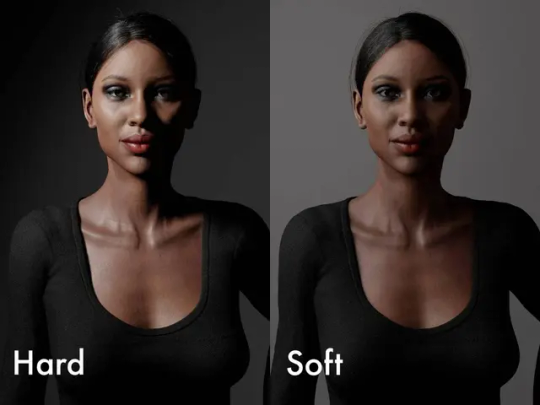
Now, it's important to remember that hard light is not *bad* and soft light is not *good*. In photography, the oft-used parlance "flattering" just refers to the rendering of facial features and blemishes. So you might use a more flattering lens to make sure faces do not distort or a more flattering light modifier to reduce wrinkles.
But there are situations where soft light can be very boring and hard light can be much more dynamic and interesting. But if you have someone who is insecure about their skin or has a lot of blemishes, you can mitigate that by making the light softer. But if you have someone with great skin and a lot of angular facial features, you might use a hard light to show that off.
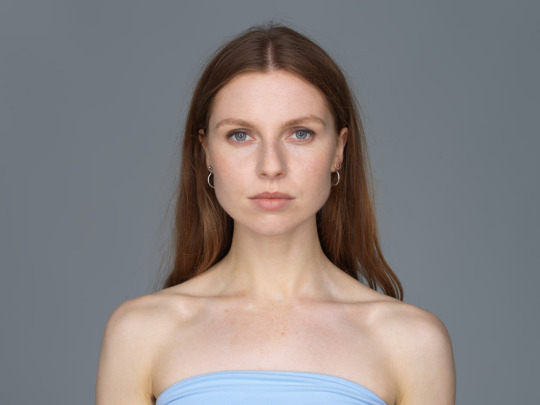

Which of these do you prefer?
The one on the left was taken with a 7 foot diameter light source and is *very* soft. But the other had a 1 foot diameter and I think it is more dynamic and interesting.
You can also mix hard and soft light. And with something like a parabolic reflector or a beauty dish, you can even modify a light source to be hard and soft at the same time.

This technological terror of a light modifier is sort of like having 24 individual small lights around the edges but the entire surface of the reflector also acts as a single large light source.
And when it isn't atomizing Alderaan, it is taking photos like this...
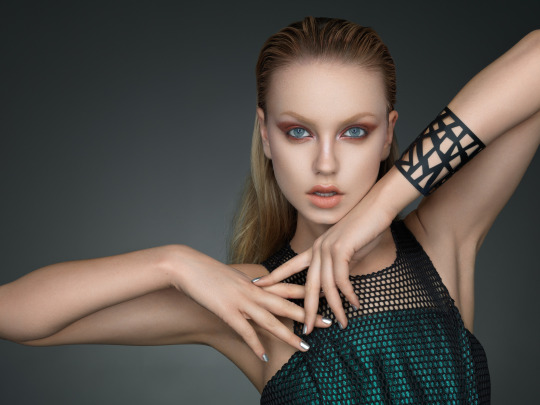
This creates a falloff of light around the edges of her face, nose, and arms while also reducing the intensity of the shadows. Lenses with longer focal lengths prevent distortion of facial features but also flatten our faces. So a modifier like this can bring back dimensionality.
Neat!
Now I just need $8,000 to buy the Death Star light.
There are a ton of possibilities when it comes to modifying light sources, but most people typically want the main light on the subject to be in the realm of soft and use hard light sources as edge lights.

Also, everything is a spectrum and light is no different. There is a giant space in between hard and soft to play with. In fact, the hardest light possible would be cast on a subject floating in space.
And the softest light possible would be on a planet that has 100% cloud coverage that still allows sunlight to scatter through.
So, I have determined the surface of Venus to be the most flattering light in the universe.
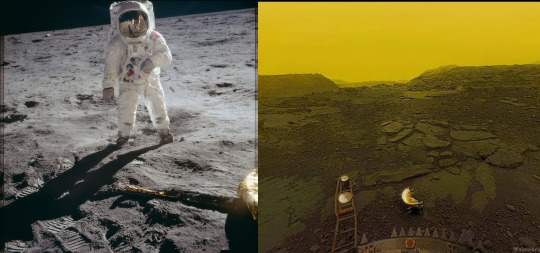
Look at how dark and sharp that astronaut shadow is! And I'm sure Venusian photography would be quite popular if you wouldn't burst into flames.
On planet Earth, noon on a clear day would be the hardest light and a very overcast day would be the softest light.

How can the sun be both hard and soft light?
Well, the sun is quite large, but it is very small in the sky and very far away. It is the only thing humans can observe that is close to a "point" light source—the smallest light source possible that shines light equally in all directions.
But on an overcast day, sunlight scatters through all of the clouds and becomes a HUGE homogenous light source. The clouds become a singular giant light above us. And as you can see, the light is so soft the woman does not have a hint of shadow on her face. And shadows can draw attention to pores, wrinkles, blemishes, and other textures.
But wouldn't the smallest light source be a laser or something?
When photographers refer to a small light source we mean from the perspective of the subject being lit. This is referred to as apparent or angular size.
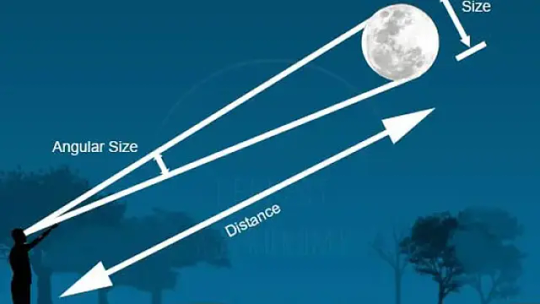
But you also have to account for the size of the area the light source can illuminate.
This is the area a laser can light up.
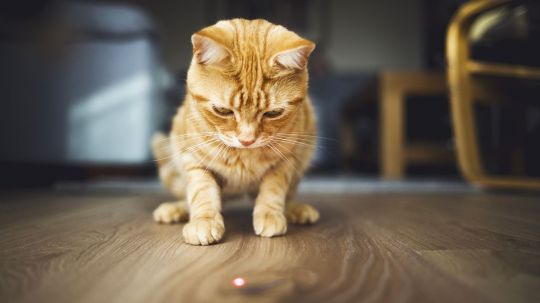
And this is the area the sun is able to cats cast light upon.
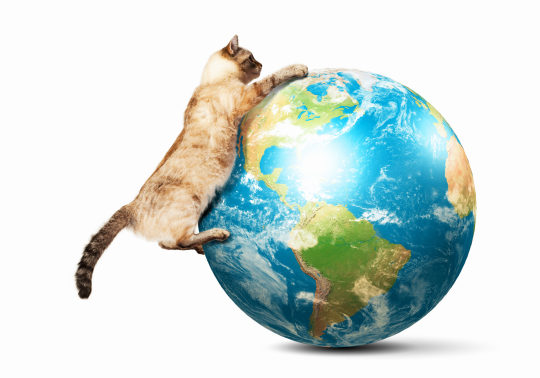
It doesn't matter if a laser is close or far away, it focuses light onto a very small area. But the sun lights up half the planet. So look at imagine the apparent size of the sun in the sky and compare its size to half of the Earth. In that relative circumstance, the sun is a super tiny light source.
And the sun becomes an even tinier light source on the moon because there is no atmosphere or clouds to scatter and enlarge it.
You can change the apparent size of a light source in two ways...
The physical dimensions of the light and the distance from the subject.
A light with small dimensions can be a large light source if it is close enough and if the subject is small enough. So a flashlight could be a large light source for an ant if that flashlight is directly next to said ant. But a flashlight could never be a large light source to a human.
However, we can enlarge small light sources with modifiers.
A modifier can be a softbox. It can be a piece of paper. A large poster board. A wall or a ceiling. Anything that changes the nature of a light source can be a modifier. But not all modifiers increase the size of a light source.
So, you can take that flashlight, shine it on a wall, and reflect the light to make a giant light source capable of producing softer light.
But what you cannot do is put diffusion material directly in front of a flashlight and make the light it produces softer.
When Arun put that diffuser on the front of that tiny light, he was not making the light any bigger. He was only making the light more diffused.
What does diffusion *actually* do?
Diffusion scatters light. It makes light bounce in all directions and keeps it from being focused. And while this is an important aspect to making a light source larger, it does not change the apparent size of a light source on its own.
Diffused light is homogenous.
A homogenous light source has the same intensity across its entire surface area. And that homogenization is the key to creating a better soft light source. It can *assist* in making a light source larger, but only if you know how to wield that diffusion properly.
When you shine a flashlight toward a wall, you increase the apparent size of the light source.
Fantastic! You now have a softer light. Mission accomplished.
But if you do not diffuse it, you will create a hotspot.
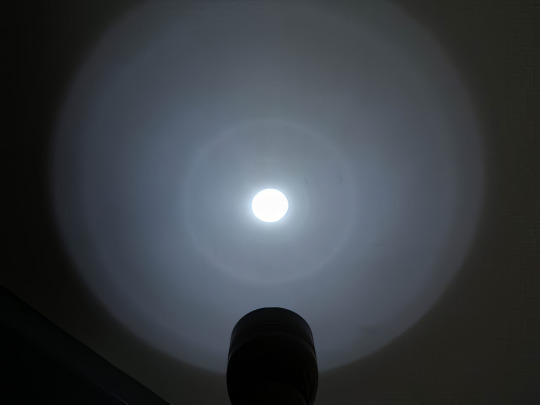
That bright hotspot will reflect more light than all of the other light reflecting off the wall. That reflected light has different intensities across its surface area and you end up creating TWO distinct light sources—one hard and one soft.

This can sometimes be desired if you want to create graduated light that falls off like I showed earlier. But if it is not controlled well with a specialized modifier a hotspot can cause more problems than benefits.
This can reveal unwanted texture, double shadows, cause harsh glare, and it may not achieve the desired amount of soft, flattering light you were hoping for.
However, if you diffuse the light from the flashlight before it hits the wall, the light will scatter and reflect off the wall more evenly. You will create a more *homogenous* light source that acts as a single entity of light.
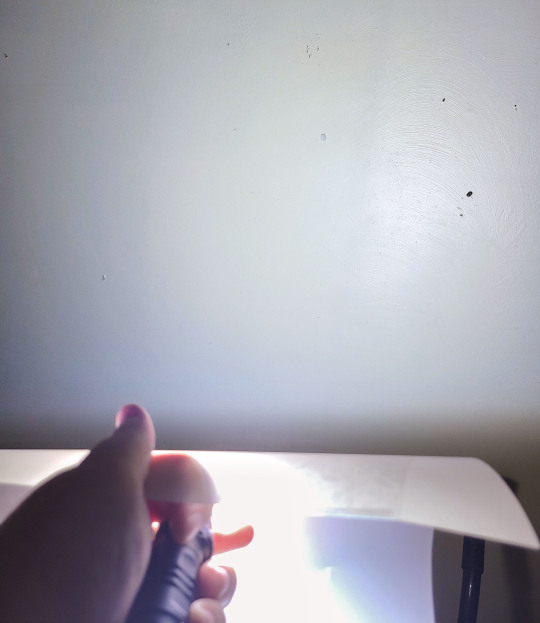
Diffusion does reduce the overall intensity of the light, but that is usually a worthy trade off for the increased homogeny.
These pesky hotspots are actually a big problem with those cheap softboxes you can buy off Amazon.

Many of them do not have enough diffusion to create a single homogenous light source. So they end up with a hotspot that gives you that double light source effect.
I was able to fix this with my friend Katrina's softbox by adding a layer of tracing paper in front.
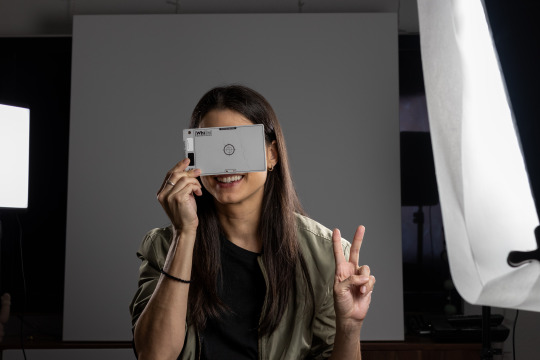
You can see the chip clip holding the tracing paper in place on the right side.
Photography is just problem solving all the way down.
A higher quality softbox will have a second layer of diffusion already built in to prevent this, so make sure the softbox has this feature before buying.
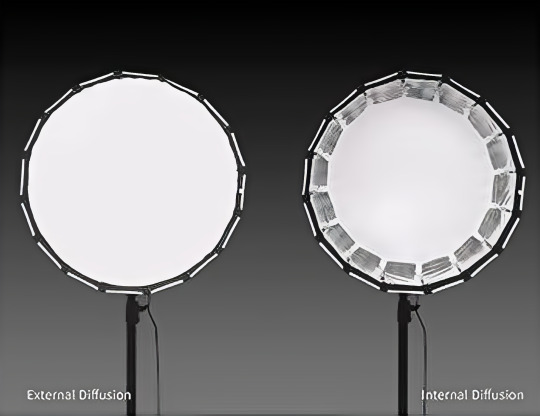
Or invest in a roll of tracing paper and some chip clips.
Softboxes are an ingenious light modifier when built properly. They take a small light, diffuse it, enlarge it, and then focus it toward your subject. It's essentially a paradox of scattered & focused light. And since all of the scattering only happens *inside* the softbox, it gives you great control over how that light hits your subject. And you can focus it even more by putting a grid on the front.
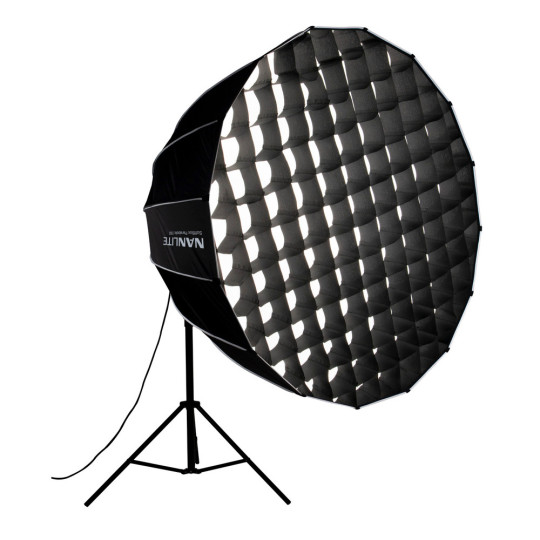
This keeps light from "spilling" off to the sides though it can reduce intensity a bit and create unusual looking catchlights in the eyes.
Whereas a cheap shoot-through umbrella kinda "shoots" scattered light all over the place and causes a ton of extra reflections off the walls and ceilings. That may end up giving you unwanted second, third, and fourth light sources contributing to your exposure.
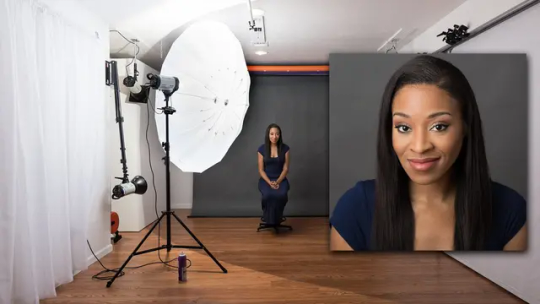
You can see light hitting the left and right walls and the ceiling—those pesky photons are going everywhere! And while it is giving a soft, flattering result due to that umbrella being so freaking big, you have almost no control over the light and how it affects your background.
So, yes, a softbox can make a small light source bigger, but that doesn't always mean you will get "soft" light.
This softbox takes a 10 inch LED panel and creates a 12 inch light source. This is mostly a scam product.

The marketing says it makes the light softer.
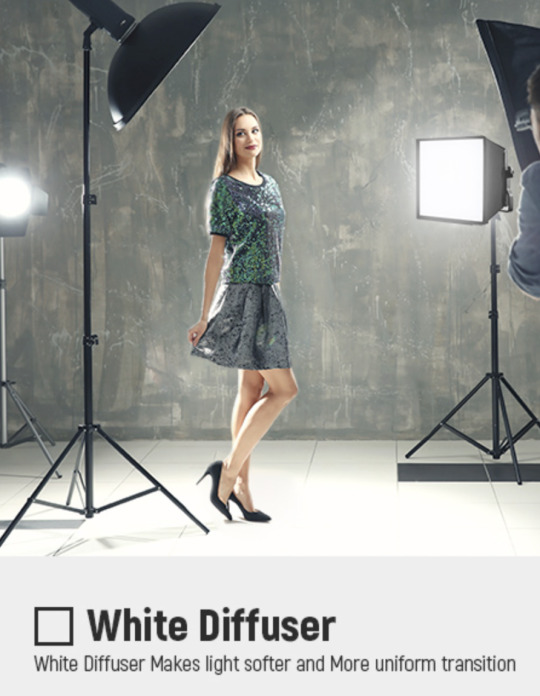
And while that is *technically* true, I'm afraid people are going to be disappointed if they think this thing is going to dramatically soften their light. A small increase in surface area like that would only be dramatically different if you were lighting a little toy car or the hypothetical ant friend I mentioned earlier. Something the size of a person is not going to see a difference in softness. Not to mention you are going to decrease the power of your light by adding diffusion and have no softening benefits.
Photography gear companies love taking advantage of new photographers because the desire to buy more gear to improve the quality of photos is quite strong. This is jokingly referred to as G.A.S. or "Gear Acquisition Syndrome." And while there is absolutely gear you can buy to improve your photos (lights, lenses, tripods), knowledge trumps any piece of gear at any time.
So, no, this scam softbox will not make the light appreciably softer. The only way to make this light softer is to find a softbox that enlarges it more than 2 friggin' inches, bounce it off something larger, or bring it closer to the subject. Move your light as close as possible and you will enlarge its apparent size.
Or, conversely, you can move your light farther away to make it hard.
Meaning you can technically make a softbox a hardbox.
Seriously, can we just do the whammy box thing?
So, what have we learned?
Soft light is more flattering to skin and reduces texture and harsh shadows.
Hard light increases contrast, sharpens shadows, and highlights texture.
Neither is good or bad. Soft light can be boring. Hard light can be interesting. A mixture of the two often produces the best result.
The only way to make light softer is to enlarge the light source.
You can enlarge a light source by...
Increasing the physical dimensions with a modifier.
Moving the light closer.
Reflecting the light off a larger surface.
Diffusion alone does not make a light softer.
Diffusion makes a light source more homogenous by mitigating hotspots.
Softboxes create homogenous light that you can direct and focus.
A softbox can still produce hard light if it is really small or really far away.
We should call it a whammy box.
How can you use this knowledge?
Well, the first thing you can do is...
DON'T BUY A RING LIGHT.
YES, I AM RANTING ABOUT RING LIGHTS AGAIN!
That giant hole in the middle of your light is a great spot for extra light.
And as we just learned, a larger light source is softer. So unless you specifically need a ring light and know how to use it (facial close-ups, camera goes in the hole), you are better off getting the biggest light you can fit in your space.
Look at how much bigger this light is than if it were a ring light.
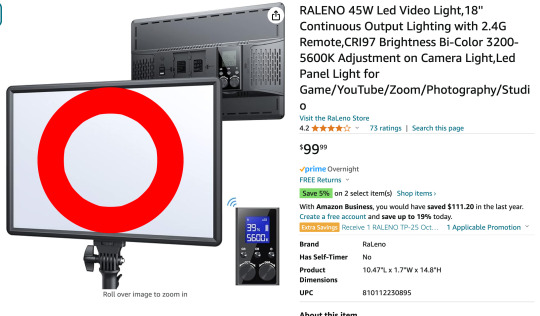
It's like all of these influencers are throwing perfectly good light into the garbage.
Sorry, let's try this again.
Once you avoid ring lights, how can you use this knowledge?
I know a lot of you reading this are not influencers or YouTubers or photographers. And you may be thinking all of this knowledge I just shoved in your dome is useless.
But here's the thing...
We all take photos.
And I think we all want our photos to look their best.
If you start thinking more about light when you take photos, I promise you will be able to improve their quality.
If you are taking a selfie, think about where you can go that has a larger light source. Perhaps you have a large window. Or you have a big overhead light or floor lamp that shines up into the ceiling.
I actually had this idea to create a mega light that could blend in with a house's decor, but secretly be a photography light for taking pictures of people and pets indoors at night.
Secret Photography Light Ingredients
Cheap Floorlamp
Dual Light Socket Adapter
9000 Lumen LED Bulbs
(Seriously, if you put that together, stick it in a corner, and turn it on when your kids or pets are playing, you will never have another blurry photo from inside your house unless they are going full zoomies.)
If you are outside on a sunny day, don't stand in direct sunlight.
Remember, THE SUN IS ACTUALLY SMALL, angularly speaking. Find a shady spot under a tree. Or put the sun behind you and face a big white wall so the reflected light smacks you in the face.
Walls are light sources!
The ground is a light source!
Remember that moon photo?

You were looking at the sharp shadow earlier because I drew your attention to the sun being a small light source.
But the surface of the moon... HUGE LIGHT SOURCE.
How do you think the front of that space suit is lit when the sun is behind him? Either Stanley Kubrick has a big reflector offscreen or the ground is a soft second light source.
If you can't make it to the moon, just wait to take that selfie on a cloudy day. I think overcast light is a little boring, but your skin will look buttery smooth without using those stupid Facetune apps.
You can also wait for good light. Sometimes sunset has some nice, soft directional light because it has more atmosphere to scatter, diffuse, and enlarge it.

If you are indoors, don't use direct flash on your phone. Never ever use direct flash if you can avoid it. But perhaps you are with friends and they all have phones too. Use one or more phones to bounce the flashlight off a nearby wall. Or open up a paper napkin and hold it just out of frame and shine light through it and diffuse it.
A piece of paper can even work!
Flashlight 3 feet away shining directly onto my face...

Flashlight shining through a piece of paper a few inches in front of it...

Flashlight shining through a piece of paper 2 feet away that is just out of frame...

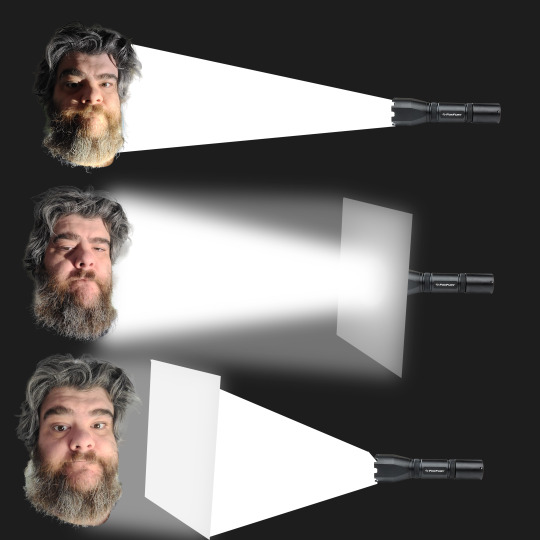
I started with a small light source.
I then made the light source a little bigger with the paper, but the diffusion was too close and it created the dreaded hotspot of doom.
And then I made the light source as big as I could by moving the paper as close to my face as possible without being in the shot. This also gave the light more room to scatter and diffuse making it homogenous.
Froggie Tip: I was using a pretty powerful flashlight, so with a phone you might get better results *bouncing* the light off the paper rather than shining the light through the paper.
So, before you take a photo, just think about how you can make your light source bigger, brighter, and more homogenous and you might be surprised how much better you look.
ANYONE CAN DO THIS!
703 notes
·
View notes
Text
Astrology Observations No.26
(Just based on my opinions, only take what resonates)

-Aquarius mars can denote a career around trends, tech, and social media. It can also denote your career taking off during times of social progress or spearheading social progress. (John Boyega’s career took off when he became the face of a much more diverse Star Wars, and a lot of his most celebrated roles have a social consciousness to them, pretty great if I do say so myself)
-Virgo venus gets the reputation of being picky in relationships (and they are) but I feel like Sagittarius Venus can be more fickle. Virgo Venus natives have a set of standards and attributes they’re looking for, but Sagittarius Venus natives will put you on a pedestal then knock you off of it when you do something they don’t like.
-Underdeveloped Gemini Venus will ghost you in the middle of a crisis (man Pisces Venus too, but they may feel bad about it lol)
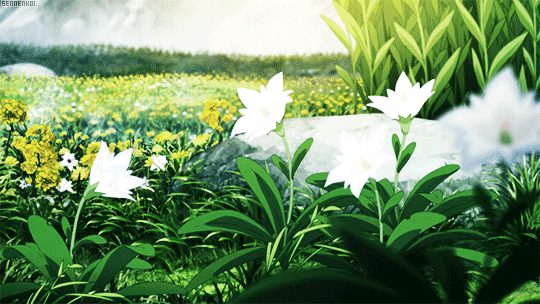
-When it comes to a sense of justice, I feel as though (developed) Scorpio moons give everyone a run for their money
-I feel like Aquarius in big 3 (sun, moon, rising) can often find themselves being forced to be humanitarian/being made to work toward the greater good in some situations (to lend others money, to take care of friends/family, to befriend someone lonely, etc.) I feel like these placements often can be forced to give more of themselves than they are comfortable with (developed ones will often find a great sense of joy in connecting with others through care though)
-On the other hand I feel like Leo in the big 3 can find themselves being forced to pay attention to themselves/become the center of attention (elevated at a job for their hard work, given unexpected attention for a talent, etc.) With Leo placements I notice that in their home life or childhood they may not receive the attention they need, but early on they get attention from outsiders. So they end up going through this arch of getting more comfortable with their sense of self and being in the spotlight.

-Aries placements can often be the first in their family to do something (go to college, start a business, etc) without more long term oriented placements things like businesses may not last though
-Virgo/Gemini/3rd/6th house placements and having an absolute weakness for stationary lol (I have a 3rd house Stellium and I have to force myself not to buy a sketchbook or notebook every time I’m out, with a 40% success rate lol)
-I always expect Libra placements (especially sun/Asc/Venus/mars) to have a very blonde/fair/delicate features naturally but a lot of Libras have this gothic look, like raven hair ivory skin classic beauty (and a lot of PoC I follow with Libra placements can be much darker skinned, which is also a beautifully classic look)

-I think Jupiter and Saturn count towards your personality, but since they’re slower moving planets I view them as the bridge between the asc/sun/moon/mercury/Venus/mars placements that really directly define your personality and the generational planets that show up in traits across people in your age range (but effect everyone differently because of house placements and aspects)
-Do a lot of people get sick during Scorpio season? Or is it just me ?? (During the last week of Scorpio season like 6 people I knew got sick at the same time and I had a medical thing, wtf it’s uncanny)
-I think Neptune in Capricorn is a big reason that depression became such a focal point for younger millennials and elder gen z- well that and late stage capitalism but yknow. (Capricorns being prone to depression, and Neptune ruling over mental illness)

-You may show more of the traits of the sign in your 12th house when inebriated (like sun in 12th may be more outgoing when they drink, moon in 12th may be more introverted/emotional, mercury in 12th may be more chatty and inquisitive, Venus in 12th may be more charming/romantic, mars in 12th may be more aggressive/antagonistic/s*xual)
-Mars in 12th/Pisces mars may find that unresolved tension sits on their subconscious and makes it hard for them to do other tasks
-Cancer over the houses can show where you feel at home (cancer in the 4th is super loyal to their family/mother, cancer in the 7th means you feel at home with a nurturing partner, cancer in the 9th means you feel at home abroad and traveling and with other communities or with religion, cancer in 11th means you feel super at home with your friends.)

#astro observations#astro notes#astroblr#astro community#astrology#cancer#pisces mars#12th house#Capricorn Neptune#scorpio season#Jupiter#Saturn#libra#Virgo#Gemini#3rd house#6th house#Aries#Leo#aquarius#scorpio moon#gemini venus#pisces venus#Aquarius mars
1K notes
·
View notes
Text
LILITH POSITIONING ACROSS ASTROLOGICAL SIGNS AND HOUSES
LILITH IN ARIES/1ST HOUSE: With a captivating physique, X exudes ambition and competitiveness, yet occasionally appears a bit cheeky. They carry an air of confidence, occasionally perceived as provocative, yet harboring subtle insecurities. Intimidation comes naturally to them, driven by an intense focus on goals. Embracing rebellion, they stand out, and their presence is hard to ignore. X embodies the spirit of someone unafraid to voice opinions, akin to the student who speaks up to the teacher. Their allure extends to a desire for personal transformation, perhaps even considering changes in appearance.
LILITH IN TAURUS/2ND HOUSE: X navigates a world marked by materialism and occasional self-reflection on body image. Issues surrounding food and self-esteem surface, creating a unique journey. Others might envy them for their magnetic charm and allure. Financial boundaries become a grey area, and their choices may not align with traditional moral values. X, with a captivating face and a mesmerizing voice, grapples with a constant hunger for more, never fully satisfied.
LILITH IN GEMINI/3RD HOUSE: Always ahead of the curve, X possesses a way with words that others envy. Sibling dynamics might stir jealousy or comparisons. Sarcasm and clever storytelling are their forte, accompanied by a unique sense of humor. Dark thoughts may cross their mind, and early school experiences shape a somewhat unstable outlook. X sees through people with a sharp tongue, occasionally causing conflicts but showcasing an insightful nature.
LILITH IN CANCER/4TH HOUSE: A nomadic life defines X's experiences, marked by family conflicts and maternal influences. Their journey involves female rivalry, emotional insights, and a quest for a sense of home. X grapples with the complexities of motherhood, either desiring it intensely or feeling the need to avoid it altogether. The influence of a mother figure lingers, leaving traces of rejection.
LILITH IN LEO/5TH HOUSE: X has a taste for unconventional art and may express themselves through creative endeavors. Custody battles and challenges with their own children mark their path. X desires attention, occasionally facing judgment for their self-expression. The stage becomes a platform for rebellion, with a fixation on pleasure and occasional struggles with addictive behaviors.
LILITH IN VIRGO/6TH HOUSE: X approaches life with a critical lens, often seeking recognition for their efforts. Body image becomes a focal point, either through their own scrutiny or the judgment of others. Their service-oriented nature sometimes leads to overcommitment, and they may grapple with extreme views on diet and exercise. The Lilith journey includes experiences with healthcare and a nuanced relationship with hygiene.
LILITH IN LIBRA/7TH HOUSE: X navigates love triangles and occasionally experiences passive-aggressive dynamics. Their charm attracts Lilith-influenced partners, and they may feel incomplete without a significant other. Relationships involve subtle power dynamics, and X might project Lilith qualities onto others. They face challenges such as infidelity and being left for someone else, shaping a complex romantic narrative.
LILITH IN SCORPIO/8TH HOUSE: X exudes power and a touch of mystery. They possess profound psychological insights and occasionally intimidate with their intuition. Privacy is paramount to them, and they may engage in unorthodox behaviors. Fear of exposure lingers, leading to intense reactions from others. X's Lilith journey involves topics like mortality, taxation, and an exploration of intimate relationships.
LILITH IN SAGITTARIUS/9TH HOUSE: X encounters challenges related to religion, education, and socio-economic backgrounds. They may hold strong opinions and rebel against tradition, leading to a sense of being an outcast. X's journey involves a struggle for acceptance and rejection, shaping a unique perspective on cultural dynamics.
LILITH IN CAPRICORN/10TH HOUSE: X becomes a subject of public fascination, carrying an aura of the unconventional. Fear of failure and challenges in professional relationships shape their journey. Lilith dynamics contribute to occasional scrutiny and accusations, adding layers to their professional narrative.
LILITH IN AQUARIUS/11TH HOUSE: X aligns with unique social groups, occasionally facing envy and drama. Friendships involve triangular dynamics and the occasional betrayal. X might avoid conformity and engage in rebellious activities, shaping a distinctive social journey.
Follow our Facebook page Mage Magic Touch for personal consultations https://www.facebook.com/profile.php?id=61565561190268
#astro notes#astrology#astro observations#astronotes#lilith#lilith conjunct ascendant#lilith 1st house#lilith in the houses#astrology facts#astrology observations#vedic astrology#astro community
1K notes
·
View notes